Sign up for The Wild
We’ll help you find the best places to hike, bike and run, as well as the perfect silent spots for meditation and yoga.
You may occasionally receive promotional content from the Los Angeles Times.
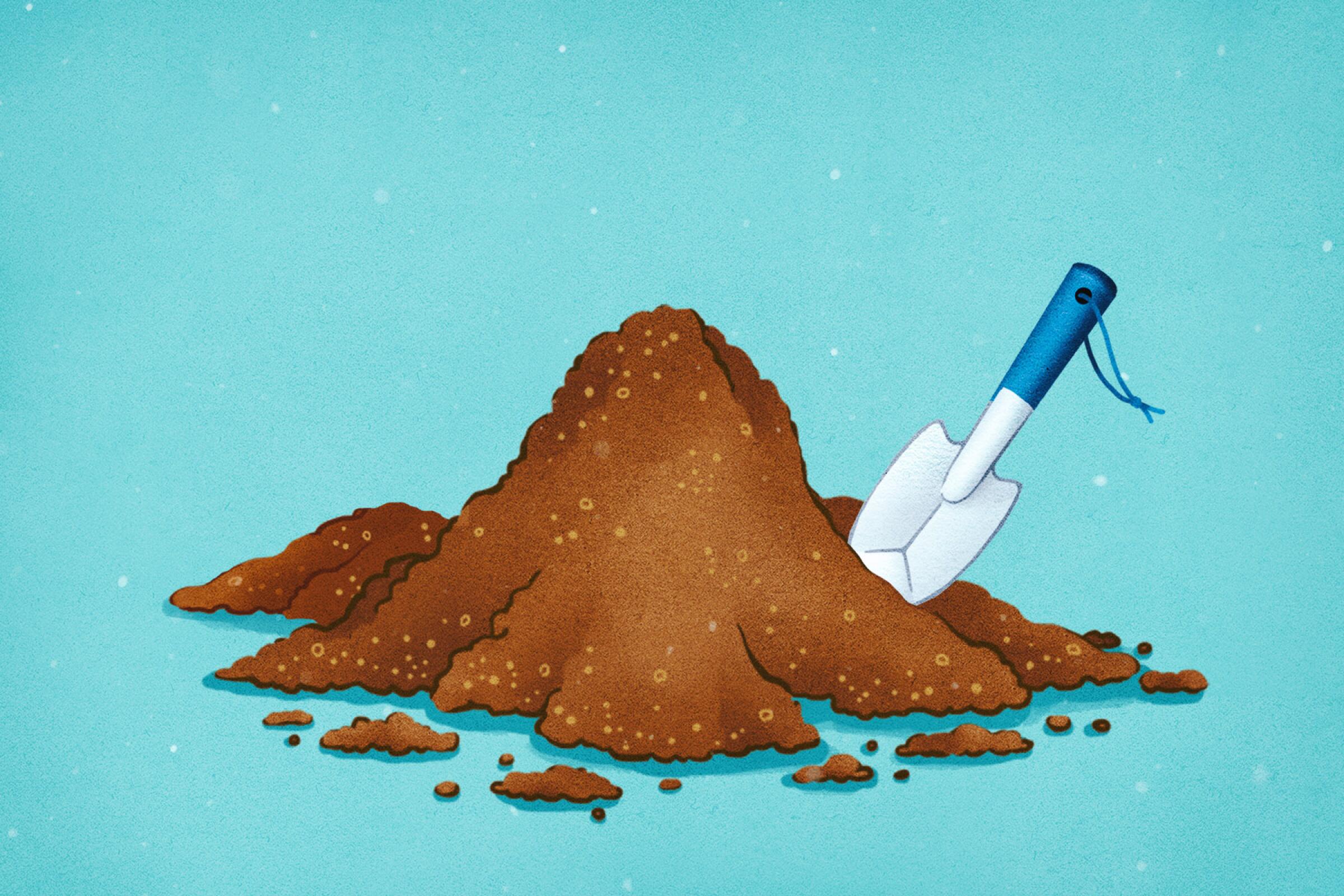
What’s the best soil to use? Whether you’re gardening with containers, in raised beds or digging holes in the ground, you can’t go wrong with organic potting soil. With its loamy texture, water-absorbing amendments, lots of nutrients and beneficial fungi, it mimics a healthy soil.
That’s the quick fix, but if you want a successful garden, start by building your soil.
“The old saying is, ‘Feed the soil, not the plant,’” said Yvonne Savio, creator of the Gardening in LA blog and the retired coordinator of the UC Cooperative Extension’s Master Gardener program in Los Angeles.
Much of the “soil” around our homes is often compacted, nutrient-starved dirt, Savio said. Yards generally are built on dirt that remains after the builders scrape away the top soil to install pipes, pour foundations and build, Savio said. With the remaining subsoil as a base, landscapers usually roll out a lawn, install a few shrubs and plump everything up with chemical fertilizers that give the plants a jolt of energy but leave the land depleted.
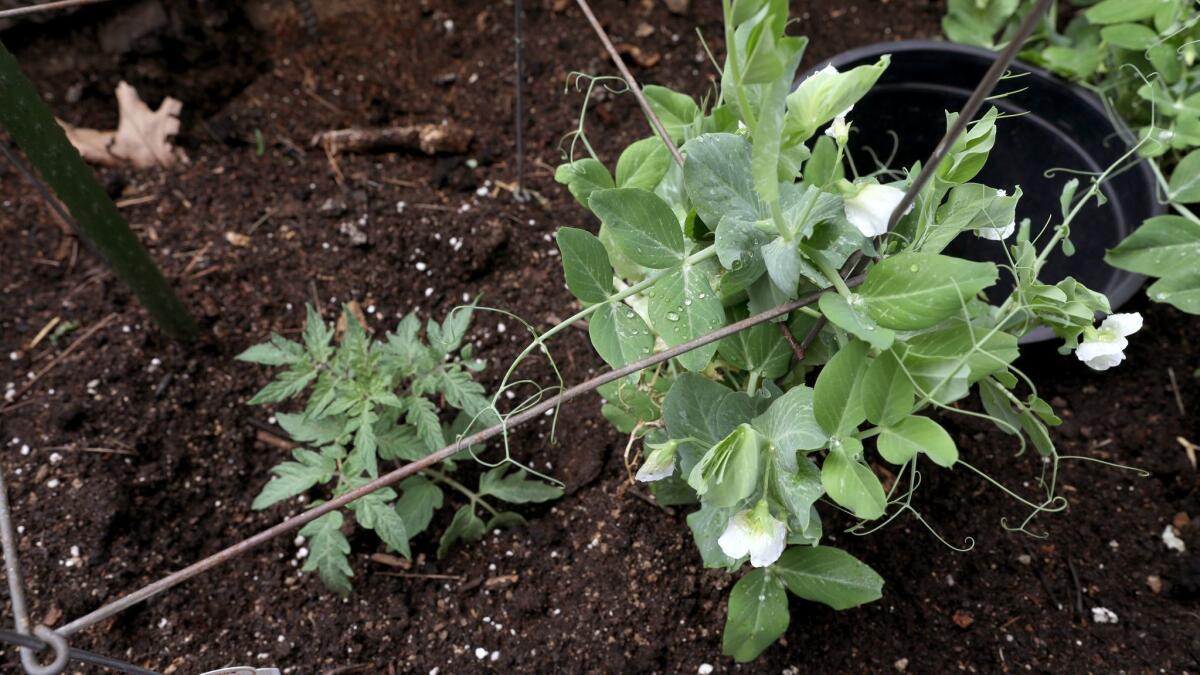
“When you just use chemical fertilizers, you’re not establishing a long-lasting base of nutrition for the plant,” Savio said. “It’s just giving it a huge piece of cake on Sunday, and then by Thursday it’s nutritionally starving.”
When you continually add organic amendments to the soil, the dirt comes alive as the amendments decompose, creating the beneficial bacteria, fungi and nutrients that plants need. “It’s really like a cafeteria where your plants can pick and choose what they really like,” Savio said.
Compost and other organic amendments, such as aged manure, coconut fiber (called coir), worm castings (earthworm excrement) and seaweed, also improve the texture of the soil, Savio said. That makes sandy soils loamy and helps them retain moisture and nutrients and improves drainage in clay soils where water pools instead of percolating into the ground.
“That’s why organic matter is the perfect ingredient, whether your soil is sandy or ‘clay-ey,’” she said. “When you have a good soil, it’s going to be crumbly, not stick together in a glop like clay or filter away through your fingers like sand.”
(Unsure what kind of soil you have? Check out the handy illustrated “quick squeeze test” on the UC Cooperative Extension Master Gardeners of Orange County website.)
Organic amendments also are a buffer against deficiencies such as high pH or alkalinity in the soil, said garden consultant Steve Masley of Grow it Organically in Petaluma, Calif., whose website offers detailed suggestions for improving garden soil.
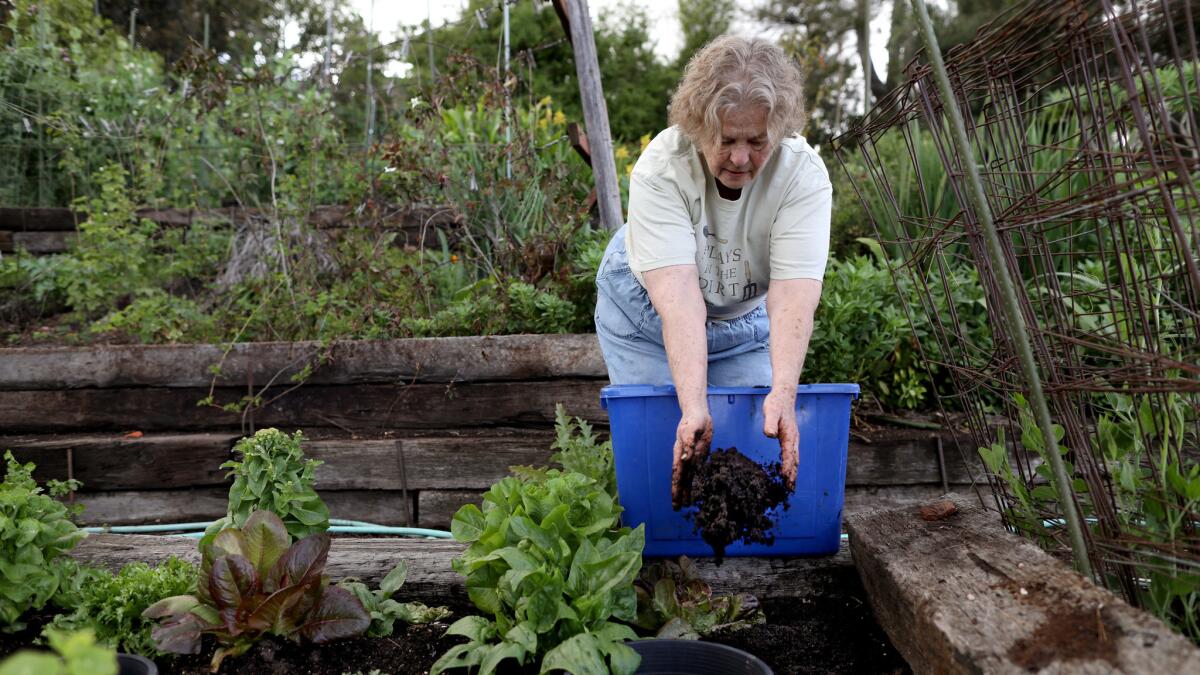
As Masley’s website explains, soil pH is a measurement of soil acidity on a scale of 1 to 14, with 7.0 being neutral and anything lower considered acidic. Southern California is known for having more alkaline soils, which have a pH over more than 7.0.
The acidity of your soil limits the minerals and nutrients available to your plants, Masley said. Minerals like phosphorus, iron and zinc become more available in acidic (lower pH) soils, but get bound up and less available in alkaline soils, he said.
You can have your soil professionally tested or you can check it yourself using a pH tester. (Some cost less than $10 at online retailers or garden stores.) Masley, who builds and maintains organic gardens, says he almost never tests for pH because adding organic matter to the soil seems to smooth out most problems.
“Plants grown in soil with lots of organic matter have healthier roots,” he said. “If you’re growing organically and put in good-quality compost, the nutrient availability is so much higher you never have to worry about pH.”
Some SoCal gardeners add about 50% sphagnum peat moss to their soil when planting acid-loving plants such as blueberries and azaleas, because it helps lower acidity. But using peat moss has become controversial, Savio said, because people are worried about depleting the natural bogs from which it comes.
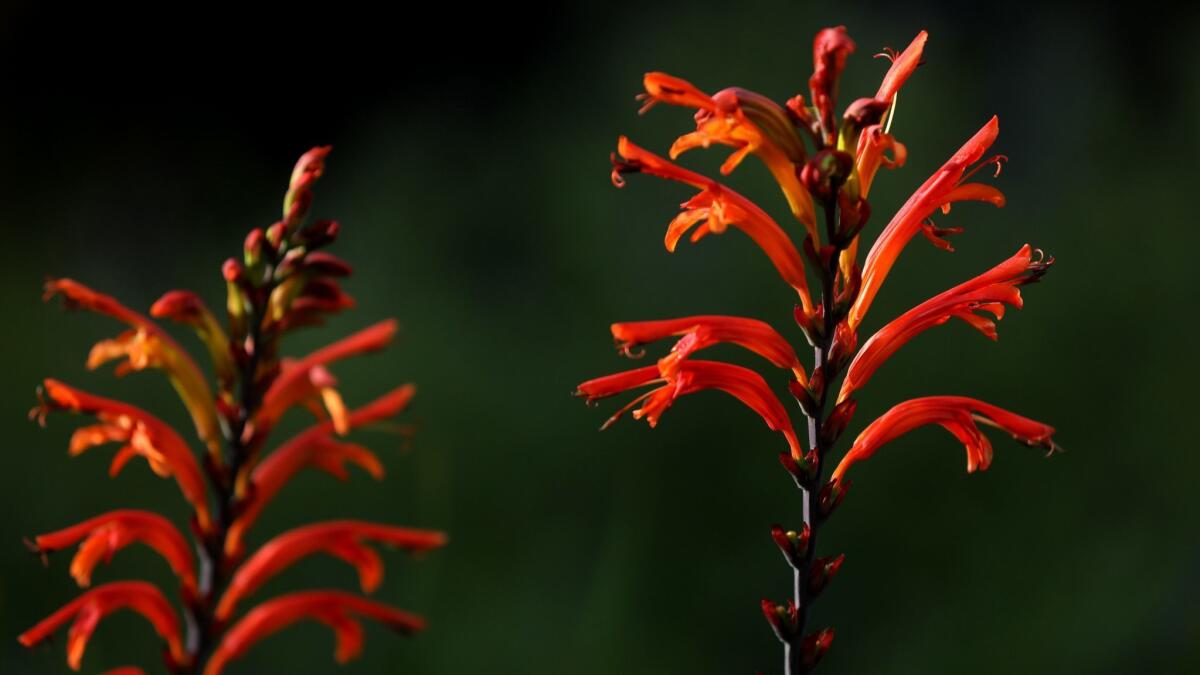
Peat moss is also used to help soils retain moisture and improve drainage, but for that use Masley said he prefers coconut coir because if peat moss ever dries out, it will repel water.
“Coconut coir almost always will soak [up] moisture from the air, but peat moss has to be watered frequently or it will dry out,” Masley said. “People buy these little six-packs of plants mixed with peat moss, and if they dry out, they can never get enough water after that. So if you’re going to use peat moss, make sure it’s never dried out and that it’s buried toward the bottom of the hole. Then use coconut coir on top, as a mulch, because it always stays moist.”
Here are three steps to building better soil.
Unless you’re making your own compost and aged manure (fresh manure will kill your plants), you’ll be buying bags, generally about 1 cubic foot, at your nursery or hardware store.
For a new 4-by-10-foot garden space, Savio recommends three bags of organic compost, three bags of composted steer manure (chicken manure can be too strong) and one bag of super-premium compost, such as Bu’s Blend by Malibu Compost or Bumper Crop by Coast of Maine Organic Products.
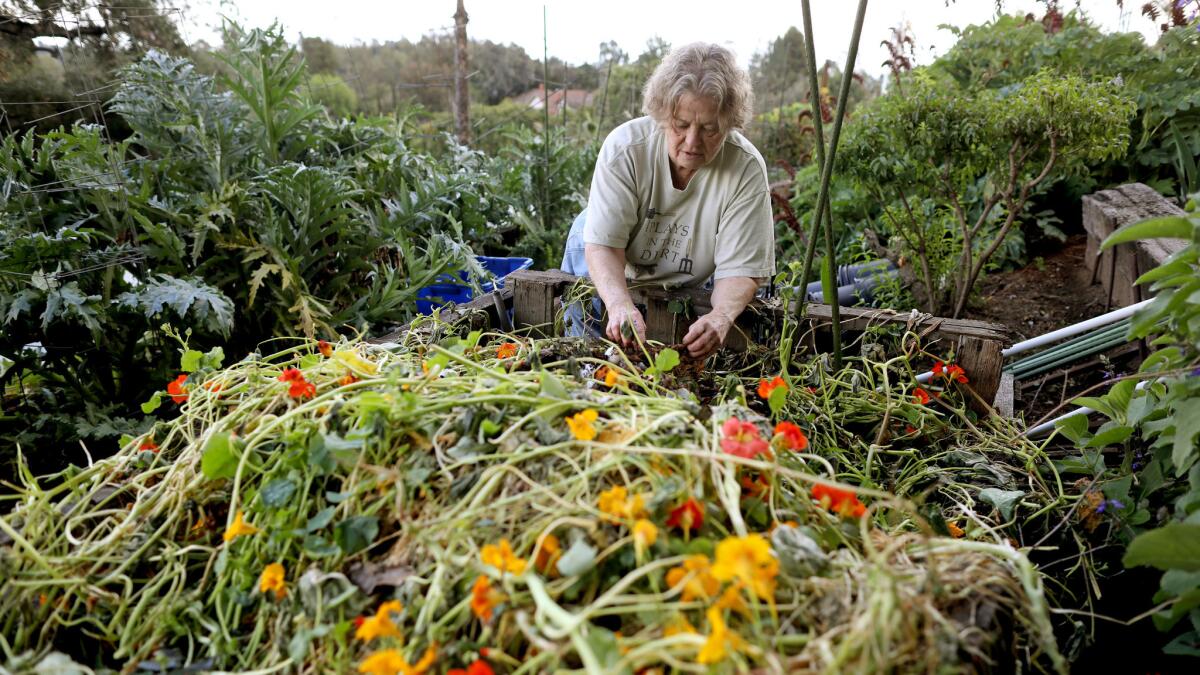
These premium composts are usually inoculated with beneficial mycorrhizal fungi and other additives designed to build strong roots, and a little goes a long way, Savio said.
Your organic amendments should make up at least 30% of your garden plot, Savio said. Evenly spread your bags of amendments and then spade or fork them into the soil, to at least one spade’s depth. The idea is to mix them with the native soil. Then water well and — attention! — wait to plant for at least two weeks.
“Many people try to do this over a weekend, add their amendments, plant their seedlings and then wonder why everything is dying,” Savio said. “The water is going to activate everything, and the soil is going to heat up, to the point that you can’t put your hand in it without being uncomfortable. It will cool down in a couple weeks’ time, but don’t plant anything until you can stick your hand fully into the soil, at least 4 inches down, and be comfortable.”
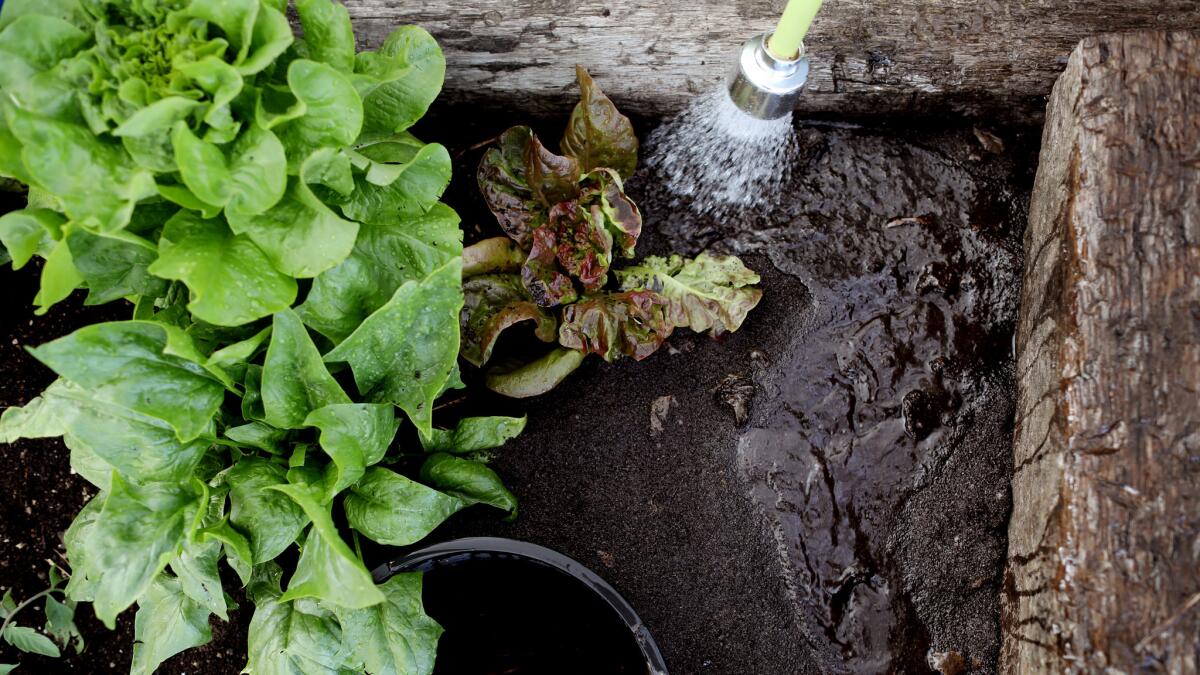
Once you plant, add some organic mulch around the plants to retain moisture, keep down weeds and continue feeding the soil. Mulch doesn’t have to be expensive. Bark and leaves from most trees provide excellent cover, but avoid walnut leaves, which are toxic to many plants, and eucalyptus, which takes too long to break down, Masley said. And stay away from wood products, such as sawdust, which suck nitrogen from the soil.
Savio uses coffee grounds, which she collects from coffee shops near her Pasadena home. She spreads the grounds thinly around her plants. Don’t go much deeper than a half-inch, she said, because thick grounds will form a crust that keeps water from seeping through. If you want to collect coffee grounds, Savio recommends visiting coffee shops and even grocery stores that offer coffee to shoppers and ask whether they will give you their grounds. Some places bag their own, Savio said, but others will want you to provide buckets to be filled.
Sign up for The Wild
We’ll help you find the best places to hike, bike and run, as well as the perfect silent spots for meditation and yoga.
You may occasionally receive promotional content from the Los Angeles Times.